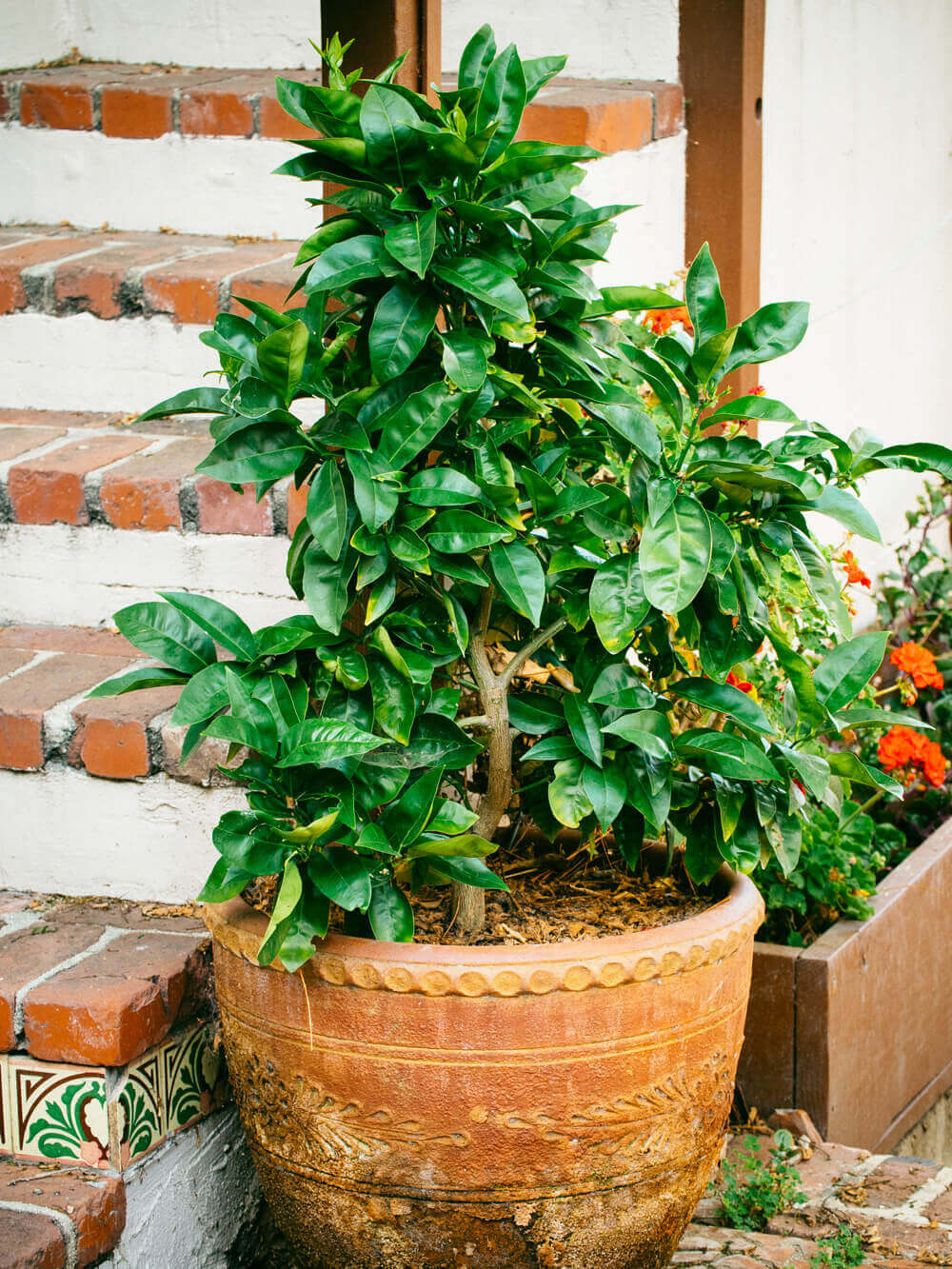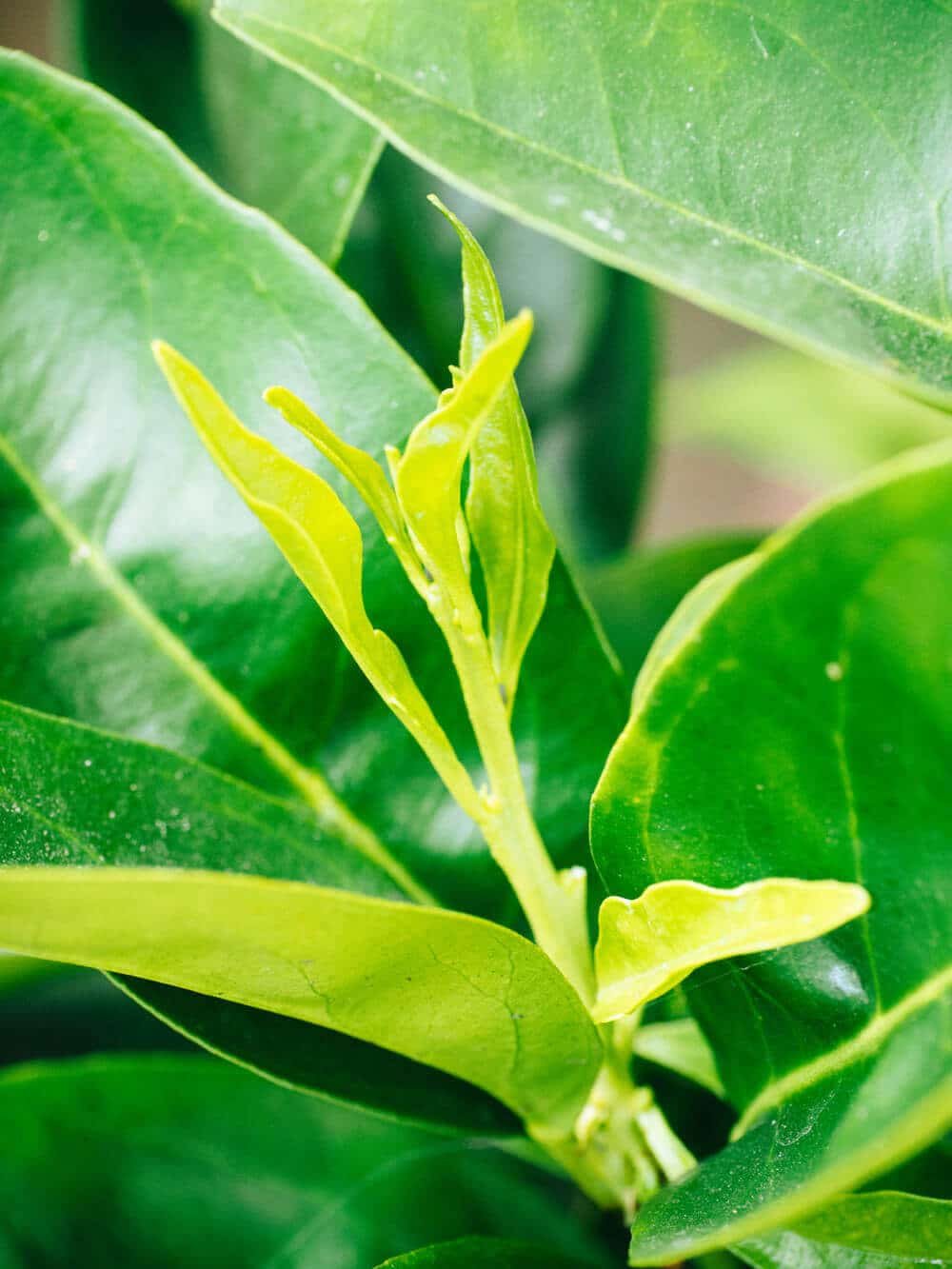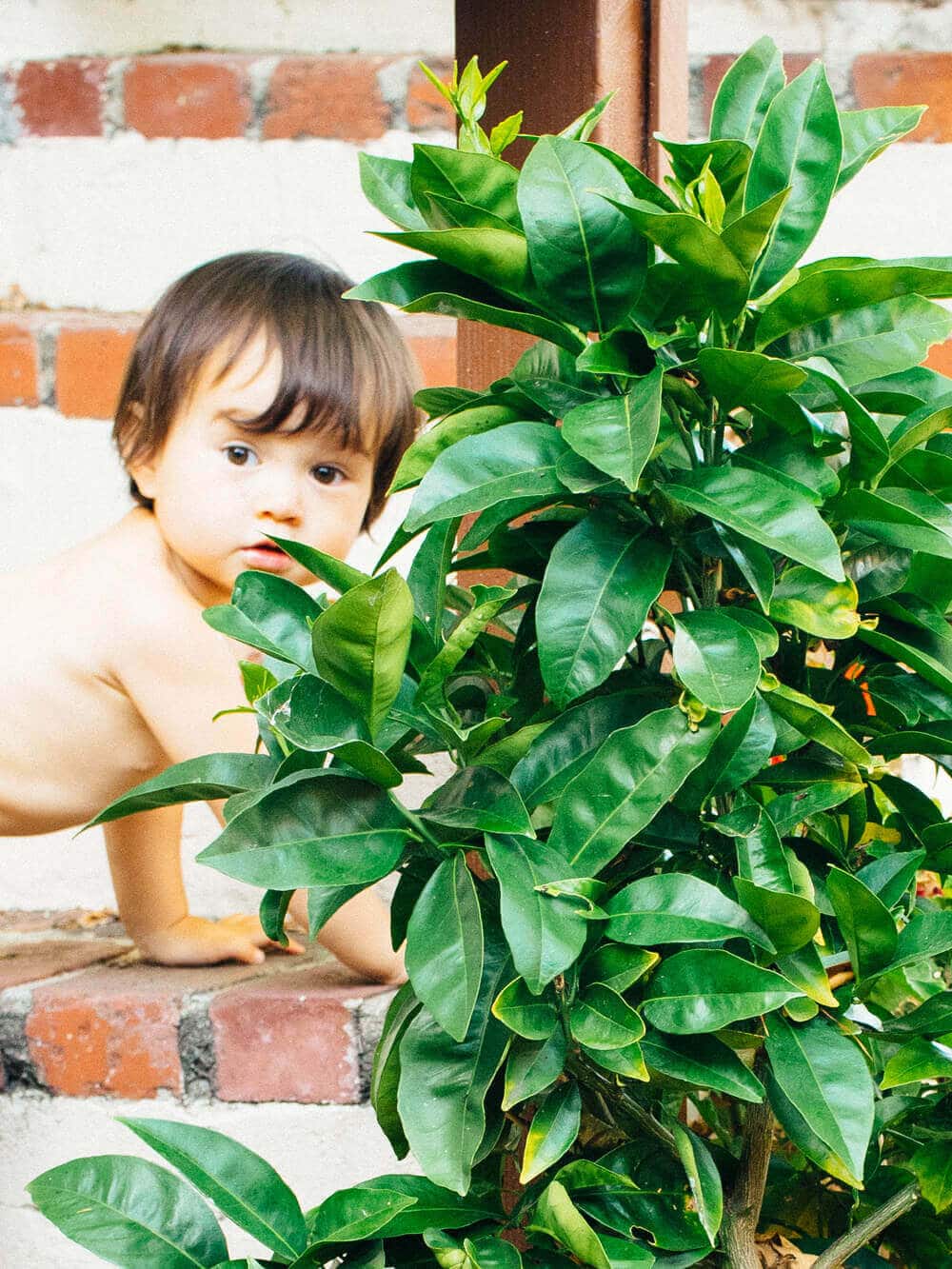If you’ve been following my parenthood posts on this blog, you may remember that after the birth of my daughter last year, I decided to take my placenta home and plant it under a tree. It was actually a container citrus tree, since we didn’t know at the time if we’d stay in California, and we wanted to be able to take the tree with us should we move.
Well, we’ve moved! And we brought the blood orange tree to Oregon with us, where it’s now overwintering in our insulated garage next to a window. It survived the long trek in a trailer and has been thriving since we potted it last year, and I know many of you were curious as to how it’s grown with the placenta buried under it.
Right before the move a month ago, this is what our tree looked like.

We transplanted it in a larger fabric pot (a 20-gallon non-degradable Root Pouch) in preparation for the move, and will keep it in the fabric pot for the next couple years until we build a permanent greenhouse.
Eighteen months post-planting, the placenta has long decomposed in the potting soil and we now feed the tree with compost tea and citrus fertilizer. We haven’t seen any signs of fruiting yet, but the tree was only a year or two old when we purchased it. By my guess, fresh oranges are still another year or two away (especially since we need to improve our overwintering situation).
I’ve had so many questions land in my inbox since my original post that I thought I’d address the most popular ones here. If any pregnant gals out there have been wondering what to do with their placentas after birth, burial is certainly worth considering! It’s a wonderful way to honor the time your child spent en caul.

Did it smell?
No, there was no smell as the placenta decomposed in the pot. In fact, it was way less offensive than other types of fertilizer I’ve used in the past.
Did it attract rodents or other critters?
No. The placenta was buried at least a foot under the tree, and no critters tried to dig it up out of the container. (Keep in mind that we used a fairly large pot, so if you plan to do this, you’ll want a proportionately sized container for the amount of organic material you have.) We also didn’t notice any surge of critter activity after planting it.
Did it leak or drip out of the container as it thawed?
I think this question stems from the fact that I froze my placenta and then buried it while it was still frozen. (You can see a picture of that in the original post.) And no, the placenta did not drip out of the drainage hole as it thawed. There was zero mess and zero odor, and the tree was watered regularly. As I’ve learned, using a placenta as a soil amendment isn’t all that different from using other animal matter, such as fish heads or cow manure. If you can look past the fact that it’s a byproduct of birth, it’s one of the purest forms of organic fertilizer you can use.
Did you notice any difference between the blood orange tree and trees that were given other fertilizers?
It’s hard to say, since my other trees were all in different stages of growth. But after burying the placenta under the blood orange tree, I didn’t fertilize it again for six months. It was green and healthy the whole time, free of pests, and very low-maintenance.
If I had another child and could keep my placenta again, I would — without a doubt — plant it under a new tree. I love looking at Gemma’s blood orange tree and knowing that this beautiful living thing shares a lifeblood with her. When the day comes that she can understand such a concept, it’ll be fun to explain to her how special the tree (and all the fruits it will eventually bear) truly is.
















Hi, i am from India. I have also planted my placenta 2 months back. But the plant is not growing and it is shredding leaves. I planted it in a 12 inch growbag. I couldn’t find the reason and it really hurts to see the plant drying and shredding leaves. What should i do. Kindly help me out
Hi Linda, thanks for sharing this. We planted our kids’ placentas too (and in a frozen state). Hazel trees, a very fruitful exercise.
Our experience was similar to yours. I wish more people knew about it and weren’t so worried about the critters! Where we live, hospitals incinerate them unless the mum asks to keep it, so planting it avoids more carbon emissions – double win. I’ve started a twitter account to normalise this practice #PlantCenta and #YBerllanBrychod Will be referencing your page 🙂
I live in SoCal and am due to give birth soon, I was Thinking of planting my placenta with Dahlia flowers since that will be my daughters name.
Would you recommend that or no?
I’m 74 and I remember my grandmother telling how she and her sisters all planted their placentas to feed their prize rose bushes. They were all Texas French and their ancestors had settled in Galveston, Texas when it still belonged to France.
I love this idea of planting the placenta! This is the second time I have heard of it.
Do you have any recommendations for fruit trees in the Pacific Northwest? We live in Washington. Thank you
We’re in zone 5-6 here in Central Oregon, and plums, cherries, pears, and apples do really well in this climate. Check your local plant nursery to see what they carry! (I’d stick with an actual plant nursery and not a big-box garden center.)
That’s really beautiful! Thank you for sharing. It definitely gives me ideas (if I can take my placenta home) after giving birth this July. We live in Southern California, where climate is mild year Round , but any suggestions for what else we could plant? I do love citrus and blood orange does sound amazing tho! Ps. Just thinking about how your child will always have this connection with the tree and nature is such a Gift and really incredible thing to do! Love that!
In SoCal you have so many wonderful options! I’m partial to fruit trees because they “give back,” and you have the option to plant them in the ground later, or keep them in a container so they can move with you. Some of my favorites (besides citrus) are peaches, avocados, bananas, pomegranates, and figs.
If you want a fruit tree that stays green year-round, consider feijoa (pineapple guava) which I wrote more about here: https://gardenbetty.com/edible-feijoa-flowers/ It’s a beautiful tree, looks kind of like an olive, and blooms in spring and fruits in summer.
You might even be able to keep a pepper plant going year-round (I had a Chinese 5-color pepper and serrano pepper that lived 4+ years outside in a container until we left them behind in our move). Or, try African blue basil. This is an amazing-smelling perennial basil with purple flowers that never goes to seed; you just have to pinch it off (as you would a regular basil) to keep it bushy. It’s also very easy to propagate via cuttings; our first one (which started off in a 4-inch pot) is the parent plant of dozens that we transplanted all over our yard and gave away to friends. Hands down, my favorite herb for landscaping and feeding pollinators.
Hope this gives you some good ideas! If you remember, I’d love for you to come back later this summer and let me know what you decided to plant, if you’re able to take your placenta home. 🙂 It’s such a special part of the whole journey of pregnancy and childbirth!